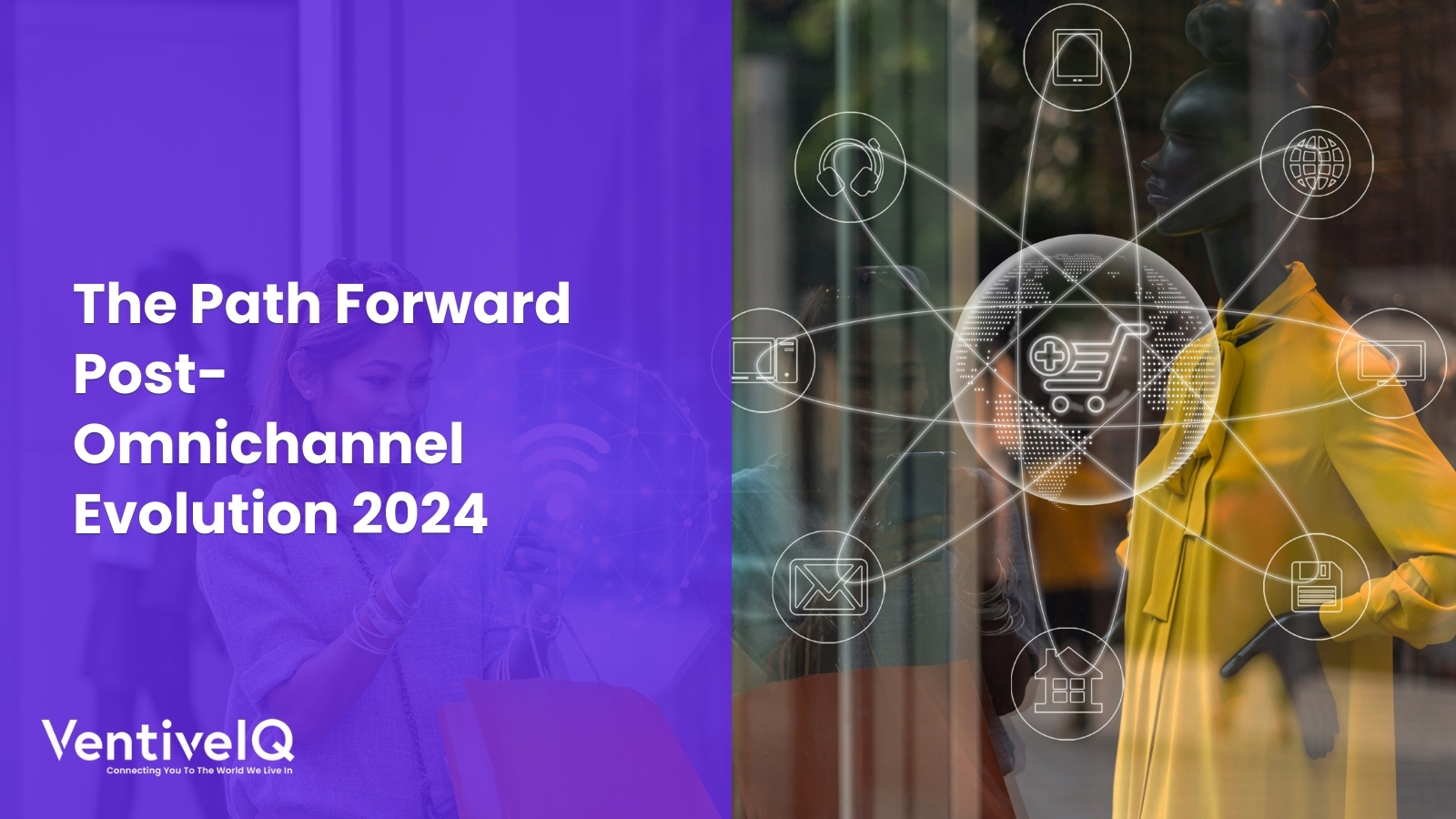Explore the future of customer experience beyond the omnichannel evolution landscape, predictive analytics & personalized marketing approaches in 2024.
Introduction
In the ever-evolving landscape of customer experience and marketing, businesses constantly seek to stay ahead of trends and meet the ever-changing demands of consumers. As we step into 2024, the question arises: What comes after omnichannel?
Omnichannel, once the pinnacle of seamless customer experience across multiple channels, is now evolving into something even more sophisticated. It’s not just about being present on various platforms anymore; it’s about integrating them seamlessly while prioritizing personalized interactions and predictive analytics.

The Omnichannel Evolution
Omnichannel, a term that has become ubiquitous in the realm of retail and marketing, refers to the seamless integration of different channels—online, offline, mobile, and more—to provide a unified experience to customers. However, in 2024, businesses are realizing that simply being present across multiple channels is no longer sufficient to meet the expectations of today’s consumers.
Evolving Needs, Evolving Landscape
However, customer needs are like living organisms – constantly evolving. As AI assistants whisper sweet nothings in our ears and AR/VR paints dazzling realities before our eyes, the bar for expectations rises. Omnichannel, once revolutionary, might start feeling, well, ordinary. Here’s where the future gets exciting – and a little nerve-wracking:
- Hyper-Personalization on Steroids: Imagine a world where your favorite store anticipates your every whim before you even utter a word. Fueled by data-driven strategies, AI could predict your desires with uncanny accuracy, tailoring product recommendations, store layouts, and even in-store music to your individual preferences. This level of personalization, while thrilling, raises concerns about privacy and the potential for manipulation. Striking a balance between convenience and autonomy will be crucial.
- Blurring the Lines Between Physical and Digital: Immersive technologies like AR and VR could revolutionize the way we shop. Imagine trying on clothes in a virtual fitting room that mirrors your living room or exploring exotic locales before booking your next vacation. The lines between physical and digital experiences will blur, creating hyper-realistic, interactive brand ecosystems. But accessibility and inclusivity become critical factors here. Not everyone has access to cutting-edge technology, and ensuring everyone feels welcome in this evolving landscape will be essential.
- Conversational AI: Your Shopping Buddy: Chatbots will graduate from robotic order-takers to engaging shopping companions. Imagine a witty AI assistant who cracks jokes while recommending products, answers your questions with genuine empathy, and even helps you navigate the return process with a smile. But remember, AI is a tool, not a replacement for human connection. Building trust and ensuring these interactions feel genuine will be key.
Embracing Predictive Analytics
One of the key aspects driving the evolution beyond omnichannel is the increasing reliance on predictive analytics. By leveraging advanced algorithms and machine learning techniques, businesses can anticipate customer behavior, preferences, and needs with remarkable accuracy.
Predictive analysis empowers businesses to tailor their offerings and marketing messages to individual customers, enhancing the overall customer experience and driving higher conversion rates. From recommending products based on past purchases to predicting future trends, predictive analytics plays a pivotal role in shaping the post-omnichannel landscape.

Data-Driven Strategy
In the post-omnichannel era, data is more than just a buzzword—it’s a strategic asset that fuels decision-making processes and shapes marketing strategies. By harnessing the power of data analytics, businesses can gain invaluable insights into consumer behavior, market trends, and competitive dynamics.
A data-driven strategy enables businesses to optimize their marketing efforts, allocate resources effectively, and identify emerging opportunities in the market. From segmenting customers based on their preferences to personalizing marketing campaigns, data-driven strategies lay the foundation for sustainable growth and competitive advantage.
Personalized Marketing: The New Frontier
In 2024, personalized marketing will emerge as the new frontier in customer engagement and brand loyalty. Gone are the days of generic, one-size-fits-all marketing messages; today’s consumers expect personalized experiences that resonate with their individual tastes and preferences.
Personalized marketing goes beyond merely addressing customers by their first name; it’s about understanding their needs, aspirations, and pain points on a deeper level. Whether it’s recommending products based on past purchases, sending tailored promotions, or curating content that aligns with their interests, personalized marketing fosters meaningful connections between brands and consumers.
However, as businesses embrace personalized marketing, they must navigate the delicate balance between customization and privacy concerns. While consumers appreciate personalized recommendations and targeted offers, they also value their privacy and data security. Thus, businesses must tread carefully and adhere to stringent data protection regulations to maintain trust and credibility among their customer bases.
Challenges and Tradeoffs
Despite the immense potential of the post-omnichannel landscape, businesses face many challenges and tradeoffs along the way. From technological constraints to organizational barriers, the journey toward personalized customer experiences is fraught with complexities and uncertainties.
Technological Constraints
Implementing predictive analytics and personalized marketing strategies requires robust technological infrastructure and capabilities. From data collection and analysis tools to marketing automation platforms, businesses must invest in state-of-the-art technologies to unlock the full potential of customer data.
However, technological advancements come with their own set of challenges, including integration complexities, data silos, and cybersecurity risks. As businesses navigate the intricacies of digital transformation, they must prioritize agility, scalability, and resilience to stay ahead of the curve.
Organizational Barriers
In addition to technological constraints, businesses often encounter organizational barriers that impede their journey toward customer-centricity. From siloed departments to legacy processes, internal dynamics can hinder collaboration and alignment across the organization.
Breaking down silos and fostering a culture of innovation and agility are paramount to driving meaningful change and embracing the post-omnichannel paradigm. By empowering cross-functional teams and fostering a customer-centric mindset, businesses can overcome organizational barriers and unlock new opportunities for growth and differentiation.
VentiveIQ’s Vision on Omnichannel Era
VentiveIQ believes that in 2024, the concept of omnichannel is evolving rapidly. While omnichannel strategies have been integral to providing seamless customer experiences across various touchpoints, VentiveIQ sees a shift towards more sophisticated approaches. In the post-omnichannel era, VentiveIQ emphasizes the importance of embracing predictive analytics, data-driven strategies, and personalized marketing techniques.
VentiveIQ recognizes that predictive analytics enables businesses to anticipate customer behavior and tailor experiences accordingly. By leveraging advanced algorithms, businesses can gain deeper insights into customer preferences and trends, thereby enhancing the overall customer journey.

Impactful Decisions, Impactful Future
As we shape the future of customer experience, it’s crucial to remember the impact of our decisions. We must prioritize ethical AI, inclusive technologies, and responsible data practices. We must create experiences that empower and delight, not manipulate or exclude. After all, the post-omnichannel future shouldn’t just be about convenience; it should be about building meaningful connections with the people who keep our businesses thriving.
So, what comes after omnichannel? The answer lies not in technology alone, but in our ability to harness its power for good. By prioritizing human values and responsible innovation, we can create a future where customer experience reaches new heights, and the thrill of discovery never fades.
Conclusion
As we look ahead to 2024 and beyond, the omnichannel evolution presents both opportunities and challenges for businesses across industries. By embracing predictive analytics, data-driven strategies, and personalized marketing approaches, businesses can create immersive experiences that resonate with today’s discerning consumers. However, success in the post-omnichannel era requires a strategic mindset, technological savvy, and a relentless focus on customer-centricity. By considering the impact of their decisions and navigating the tradeoffs involved, businesses can chart a course toward sustainable growth and competitive advantage in the digital age.



